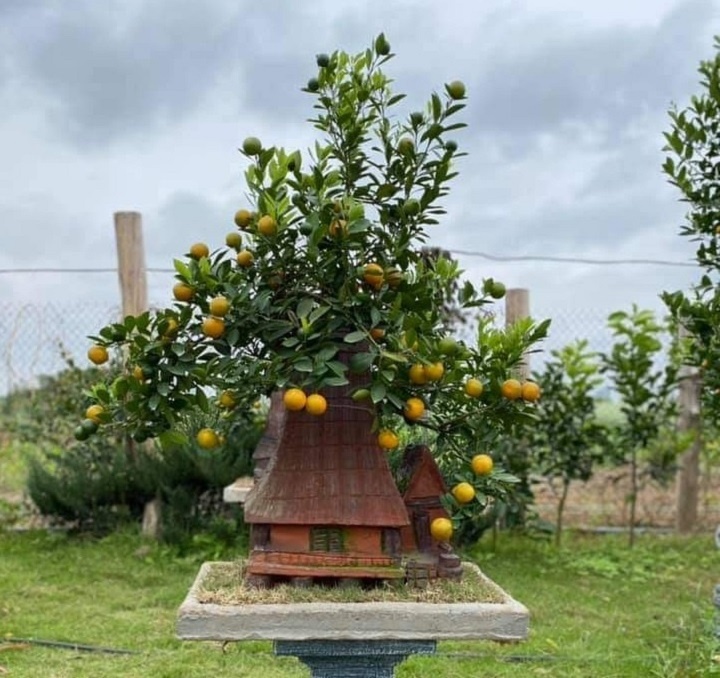Together with peach and ochna, a kumquat is seen as one of the indispensable ornament plants of many Vietnamese families during the festive holiday. A fruit-laden kumquat tree makes a house brighter and warmer, especially in the cold weather in the North.
| Kumquat is one among essential home decoration items for Tet. Photo: Phong Dao |
The tree is a popular decoration for the living room during Tet. Its many fruit symbolize the fertility and abundance that the family hopes will come in the coming year. The more fruit on the tree, the luckier your family. Greeting cards and good luck symbols are hung from the Tet tree.
This year, the kumquat pots in the shape of a house is a new unique product that is soon favored by many people, thanks to the creativity of planters at Tu Lien kumquat planting village (Tu Lien ward, Tay Ho district, Hanoi).
Ms. Ngo Thu Trang, owner of Xuan Loc kumquat garden in Tu Lien village, the creator of this unique bonsai, said that each of them conveys a message, such as a house is the most peaceful place of everyone which nurtures the affection of family members, motivate them to overcome difficulties and achieve success in society and connects all generations together.
In order to make the kumquat bonsai planted by a house figurine more diverse and livelier, Ms. Trang chooses typical tiled-roof houses in the Northern Delta, cultural communal houses of the Central Highlands and ancient houses of Hanoi.
| A Kumquat tree is plant inside an ‘ancient house’ jar. Photo: Phong Dao |
According to Ms. Trang, the unique and most important thing is the design of the house models to grow the tree. From the front, each pot of kumquat is a complete house model, but in the back, some holes are skillfully dug to put the kumquat tree inside.
These house models are all handmade by the famous craftsmen of Phu Lang pottery (Bac Ninh province) with a lot of sophisticated details. Then the gardeners follow each model to shape a kumquat tree in it and each comes with different looks. It takes about two years to grow a bonsai kumquat tree. “This year is the first we pilot selling this model with 50 pots and they soon catch a lot of attention. The price of each ranges VND3-10 million ($130-435) and all the trees have been sold out,” said Ms. Trang.
Together with kumquat tree in house models, other new kinds of kumquat pot have been created in recent years, providing a new and interesting selection for the traditional customs as well as bonsai hobby of the local people.
| The garden of Kymquat bonsai in Tu Lien kumquat planting village (Tu Lien ward, Tay Ho district, Hanoi). |
Accordingly, bonsai kumquat in well-known Bat Trang ceramic pots with different sizes become more and more popular. The body of the pot is printed with beautiful traditional folk patterns or words of tai (wealth) and loc (fortune) as the wishes for the New Year.
With the same wishes, pots with the figurines of characters and symbols of good luck and prosperity are also favored such as three gods representing Happiness, Luck and Longevity or Maitreya Buddha.
In addition, kumquat bonsai grown on pots in the shape of the zodiac animals are well received thanks to their impressive and unique styles. These pots are also made of Bat Trang and Phu Lang pottery.
| The Kumquat is plant in a Phu Lang terracotta jar. |
In the year of buffalo of 2021, a golden buffalo carrying kumquat tree on its back is an attractive product for many people. More interesting, each buffalo features different shapes and postures.
According to some garden owners, the golden buffalo-shaped kumquat bonsai brings special meaning of good health and strength (like a buffalo) and wealth (golden) for the new year.
With a beautiful and meaningful kumquat pot displayed during Tet, everyone is happy to be ready to welcome the New Year with good expectations.








